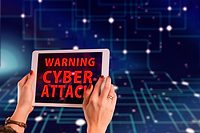US criminal Court hit by “Conti” ransomware

The Fourth District Court of Louisiana
According to CBR, the group appears to have published documents obtained from the court relating to defendant pleas, witnesses and jurors.
The court’s website remains offline. The Louisiana Supreme Court’s website was also down as CBR published, but CBR notes it was not clear if infrastructure had been pulled offline for precautionary reasons or if the malware had hit there too.
"This situation highlights how every organization possesses valuable data that threat actors can hold for ransom and paralyze operations," says Hank Schless, Senior Manager, Security Solutions at Lookout, a San Francisco, Calif.-based provider of mobile phishing solutions.
"As some organizations use a hybrid model of on-prem and cloud servers, they need to deploy modern security solutions that protect assets connecting to cloud services, such as smartphones and tablets. Threat actors know that mobile devices aren’t usually sacred in the same way as computers. Mobile phishing has become one of the primary ways threat actors get into corporate infrastructure. An advanced hacking group like the one behind Conti would likely use social engineering to convince a target employee to download a document or file to their device. Phishing attempts are getting more difficult to spot, especially on mobile devices where we can’t spot many of the red flags we’re trained to see on computers. Traditional security tools that only protect devices within the traditional enterprise perimeter will not cover the full spectrum of risk," adds Schless.
"Malware delivered through phishing is getting more difficult to protect against. Your employees’ smartphones and tablets enable productivity from anywhere. Without proper security, those mobile devices can represent a significant gap in your overall security posture," he adds. "A message containing malware can be accessed just as easily from a mobile device as it can from a computer. Mobile devices also have access to the corporate infrastructure. You need to treat mobile devices with the same priority as traditional endpoints in your organization’s security posture."
Looking for a reprint of this article?
From high-res PDFs to custom plaques, order your copy today!





